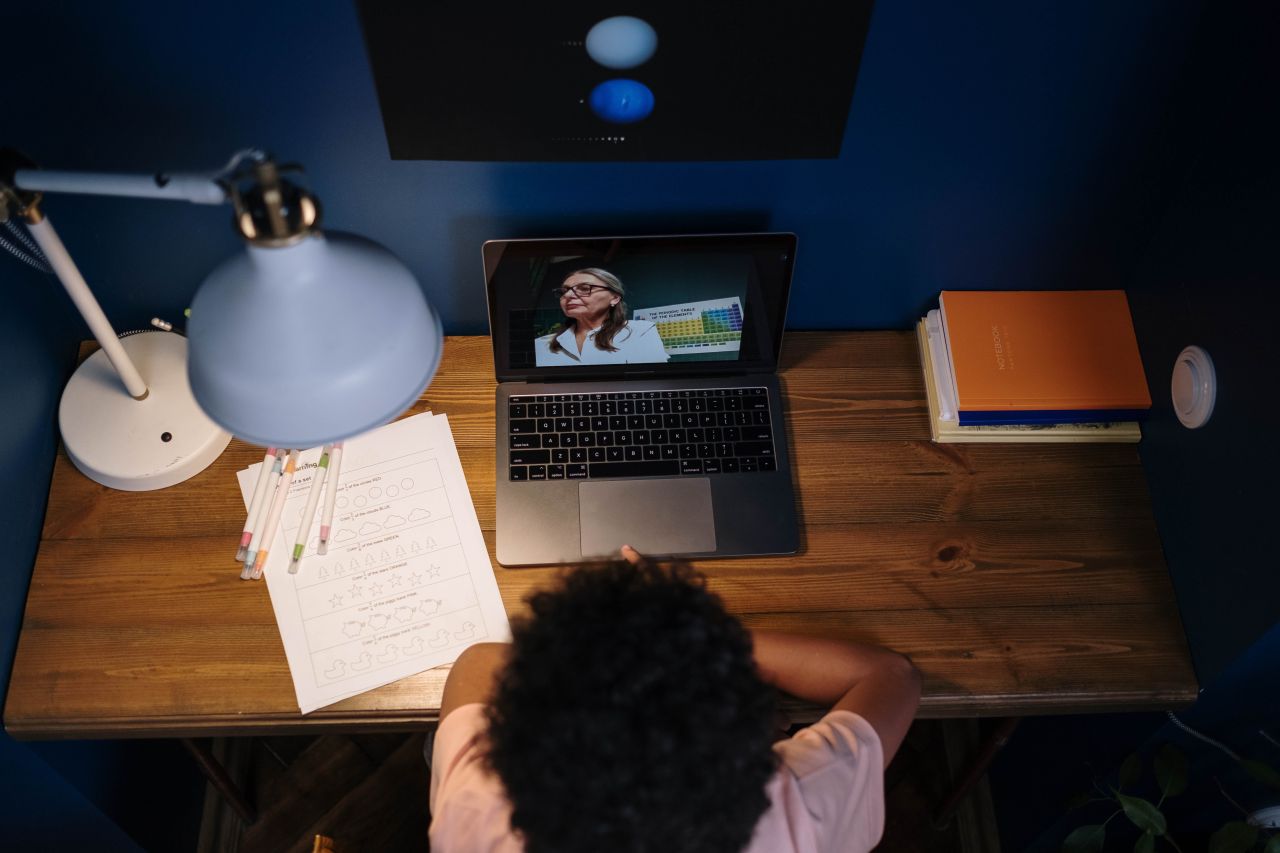Until recently, the decision to homeschool typically involved just the needs of parents and their children. But during the COVID-19 pandemic, many parents decided to homeschool based on health and safety rather than educational, social, or religious needs. As a result, some may continue to teach their children from home rather than send them back to in-person school.
Regardless of their reasons, many parents want to know what type of financial impact to expect and how to prepare and budget for the school year ahead. The good news? About 3% to 4% of school-age children in the United States are homeschooled each year.1 This means we have access to a lot of expertise and advice.
To get a better idea of how much it costs to homeschool, we looked at online surveys and information from established homeschool sites and input from two families: one that homeschooled two children for grades K-12 and one that decided to homeschool their children COVID-19.
Common Questions From Parents
Parents have a lot of questions about how to make this all work. Some of the more common concerns about the cost of Homeschooling include:
- Do you get tax breaks for Homeschooling?
- How do you decide if you should stop working to dedicate time to this?
- How should we budget?
- What happens when parents work while Homeschooling?
- What type of financial impact is expected?
Although these questions depend on personal situations, we found some general guidelines and average costs to help you get started.
Frequently Asked Questions
Companies offering curriculum or virtual classes for homeschooled students sometimes offer grants. In addition, according to Heather Levin of Money Crashers, some states also offer tax credits that can be applied to Homeschooling.
Parent vs. Teacher – One of the most common homeschooling challenges is changing the role from parent to teacher. While Mom can be playful, cuddly, and fun, TeacherMom needs to ensure the children pay attention and follow through with their schoolwork.
Juggling: As a homeschooling parent, you will have many balls in the air simultaneously. There will be days when you can't stand to see the dirt marks on the kitchen floor, you have nothing in the fridge for dinner, and the entire family is out of clean underwear. These realisations will often happen when you're in the middle of teaching a science or maths lesson. So don't let it get you down.
Many homeschooling families incorporate chores into their homeschooling day.
The entire family can help with meal planning, shopping, meal prep, and clean up.
Homeschooling is associated with higher rates of academic achievement and higher career achievement after graduation. The home-educated typically score 15 to 30 percentile points above public-school students on standardised tests for academic achievement.
Some studies have found no difference in social skills between children in homeschool environments versus conventional schools. However, some studies have found that homeschooled children score higher on measures of social ability, and some have found that homeschooled children score lower on overall social skills.
When it comes to Homeschooling, parents of high school students often wonder how their homeschooled students will get a diploma. The good news is that many traditionally homeschooled students get a diploma from their parents, which most colleges and universities often accept.
Basic Homeschooling Costs
To get started with Homeschooling, you'll need supplies including:
- Computer and other devices
- Curriculum and textbooks for each child
- Desks, chairs, and lamps
- Field trips and supplemental activities
- Internet access
- School supplies such as pens, pencils, and paper
Homeschool Curriculum Costs
Choosing a curriculum will likely be the most time-consuming part of this entire process. Unfortunately, it will also be one of the most expensive unless hiring a private tutor or teacher.
Books, School Supplies, And Other Expenses
Although you may not be buying boxes of tissues as part of your back-to-school shopping, you will have items you need to purchase for your child's "classroom."
This cost is per child, and parents surveyed expected to have their child do some or all of their schooling at home.
Depending on the curriculum you purchase, you may need to buy additional textbooks. Many families also keep a well-stocked library at home with fiction and non-fiction books to supplement language arts and independent reading time.
Before COVID-19, checking books out of the library was a significant money-saver. Unfortunately, many public libraries closed their locations during lockdown restrictions, so borrowing books wasn't always an option. However, now most libraries have reopened.
To cut costs related to books and education subscriptions, consider using free options as much as possible.
Loss Of Income
As opposed to remote learning with the local school district's assistance, Homeschooling often requires a parent to be the teacher.
If you have a two-parent household, this could mean one parent stays home and assumes this role. For some families, this means a loss of income. With that in mind, you'll need to forecast out one year without an income to see if it is possible.
If cutting one income is not possible, the parent who stays home may want to consider working part-time in the evening or the weekend. If you have expertise in a particular area and need income, you may want to consider forming a co-op, where parents share teaching a children's classroom.
That said, a few states, like Indiana, have tax breaks designed for Homeschooling. Check your state's tax guidelines for more information.
The COVID-19 pandemic increased the need for remote learning and Homeschooling to protect minors from contracting this infectious disease. According to available data, about nine million children of school-going age had already benefited from Homeschooling since February 2020. However, a topic not discussed too often is the financial impact of Homeschooling. It can be challenging but rewarding if you take the proper steps and choose the best type for your children.
Sometimes, during Homeschooling, one parent stays at home to become the primary teacher. It means that they may have to let go of a regular source of income to play this role. After physically teaching your young ones, there are lesson notes to prepare for the next day, among several other relevant activities connected to Homeschooling. By the time you're done, there may be little time left to even dedicate to an online side hustle. You may only get to work in the evenings or weekends, but that only compounds fatigue and stress.
Therefore, to get the right results, one option may be for one parent to stay behind with the kids while the other becomes the 'breadwinner' with a steady income flow. Unfortunately, this may work out pretty well in a two-parent household but can be challenging in a single-parent home.
The other option will be to hire an experienced homeschool teacher, which can also be costly if you want only the best. But, again, you can use websites for this, and you can choose whether they come to teach at home or over the internet.
Forming A Homeschool Pod
Christina Cay is a mother of two and creator of C'MON MAMA, a blog about motherhood and everything that comes with it. The decision to homeschool is something they never considered before. But in light of the COVID-19 crisis, they chose to keep their two young children home.
Cay says that since she has two young children, who are in no way built to sit in front of a computer for virtual learning, they opted to team up with two other families to form a homeschool "pod" so their children could have play and socialisation in a safe setting.
To do this, the three families hired two teachers to spearhead the pod, and while the cost was high, they felt it would be worth it. "The financial impact for us is not small because we are paying a premium rate for our private teachers," says Cay.
To help with budgeting, they laid out an hourly rate per child per teacher, and they will pay on the 1st and 15th of each month. "Establishing a set pay scale and schedule helped formalise things and has certainly helped with budgeting," she says.
How To Save Money On Homeschooling
Homeschooling need not take a toll on family budgets. There are numerous ways to cut homeschooling costs and save money without skimping on educational goals. Here are some of the best ways to save money on Homeschooling:
- Take advantage of tax-free weekends to purchase school supplies.
- Claim state tax deductions or credits for homeschooling expenses if eligible.
- Look for free or low-cost curriculum options.
- Attend a curriculum swap or host one with other homeschooling families.
- Consider a curriculum that you can reuse from student to student.
- Take advantage of free learning programs or tools at local libraries.
- Consider purchasing a season pass to local museums if they're offered at a discount.
- Use free learning resources online, such as YouTube, podcasts, or educational websites for children.
- Investigate free virtual field trips or online tours.
- Incorporate life skills (for example, cooking, cleaning, changing a tire, managing a chequebook, etc.) as part of your curriculum.
- Look for free or low-cost online courses to supplement the existing curriculum.
It's helpful to plan a homeschooling budget at the beginning of each academic year. It can help with saving money year-round. You can also add a cushion for any unexpected expenses that might come up.
Hidden Costs Of Homeschooling
Compared to the cost of sending a child to private school, or even public school, Homeschooling could save a family money. But it's important to keep in mind that some costs may be higher when Homeschooling—or at least less obvious when planning a household budget.
Here are some of the ways Homeschooling can raise costs for families:
- Curriculum: Though it's possible to find a free homeschool curriculum online or put together a curriculum yourself, some families prefer to purchase one. At the higher end, it's possible to spend $1,000-plus on a single prepackaged curriculum, which can quickly add up for families that have children at different grade levels.
- Transportation: Homeschooling doesn't mean families spend all day at home. Taking field trips, signing kids up for art classes, or joining a co-op with other homeschool families can help expand learning horizons and encourage social interaction. But it can also mean spending more on gas or transportation each month.
- Supplies: Purchasing supplies for Homeschooling can involve more than just notebooks, pencils, or markers. Families may need to purchase a microscope or other equipment to complete science labs, for example. Or they may have to procure arts-and-crafts supplies to complete hands-on projects. All of that can add to the total cost of Homeschooling.
- Food: Kids attending public school may be eligible for reduced or free lunch, depending on their state's guidelines. On the other hand, having kids at home all day could add to families' grocery spending if it means more frequent snacking or family meals together.
There's also the income factor to consider. One parent may be the sole breadwinner in a two-parent household while the other handle homeschooling duties. It can mean the loss of one income if the homeschooling parent previously held a job. And though Homeschooling as a single parent is not impossible, it can take creativity to balance the need for income with the demands of Homeschooling.
Average Cost Of Homeschooling
A variety of costs are involved when you choose to homeschool your children. Some of the most common expenses homeschooling families may pay for include:
- Curriculum and learning materials
- School supplies (for example, pencils, notebooks, and more)
- Field trips
- Extracurricular activities (for example, sports, art lessons, music lessons, and more)
- Cooperative fees for families who belong to a homeschool cooperative
- Testing fees, if state homeschooling guidelines mandate regular testing
Financial Benefits Of Homeschool
Transportation Cost Savings
Driving to drop off and pick up at school every weekday adds up. Even if you live just a few miles from school, you're accumulating several hundred if not thousands of additional miles on your car every year. In addition to gas, the cost of wear/tear, increased maintenance and more are all added costs. But, if the school takes place at the same address where you woke up that day, it's all savings in your family's bottom line.
Food At Home
School lunches get lots of debate on how healthy or wise the choices are. There's a cost to that questionable quality lunch. You'll likely do better on cost when eating at home. As for packed lunches, many families spend more on prepackaged lunch options than they realise. Lunchables aren't free!
Extracurricular Savings During The Day
Music lessons, dance, art, or other extracurricular activities are great, but all costs. Providers that focus on young people all have the same problem concerning scheduling. School-age kids are all on the same schedule. There are only so many lessons for a piano teacher that can be taught after school and when bedtime comes around. For homeschoolers, this opens tremendous opportunities. Many providers will gladly offer your family a discount for a "daytime" appointment or lesson.
Offseason Vacation And Travelling
Most Americans follow patterns for vacation and travel. Hotels, cruise ships, airlines, and other parts of the travel industry know this too. Homeschool gives your family the ability to travel when most families are tied to the traditional school calendar. A trip to visit family on the other side of the country can go from outside your budget to a real possibility by choosing a different date on the calendar.
Bypass Fundraisers
Fundraisers have become a staple of government schools. It's not just a fun fall fundraiser anymore, either. Schools now have fundraisers throughout the year. Peer pressure for children and parents alike is used to turn families into a sales force. Inevitably, many families end up chipping in as well. Avoiding the fundraising events is a financial benefit on top of the mental health upside.
Avoiding Fees Of All Kinds
Public school is free, right? You pay property taxes, but many schools still have other expenses. Many school districts have come up with creative fee schedules to charge you for things like technology, certain kinds of classes, and riding the bus in some communities. Graduation, prom, field day, and other special events sometimes carry a fee. Homeschool families get to avoid all that.
One Additional Benefit
Another benefit that's difficult to put a number on but still very important is the impact on scholarships. Contrary to conventional wisdom, top colleges actively seek out homeschool students. Any additional help to make your student more competitive for financial aid can be life-changing in terms of financial impact. Homeschooling has proven to be a differentiator in many cases, resulting in some incredible scholarship opportunities.
Conclusion
Suppose you are new to Homeschooling and looking for ways to save money; expect to spend several hours upfront researching best practices and learning from other parents. Getting started can feel daunting, but there are abundant resources available and experienced families willing to help.
Parents have different reasons for choosing to homeschool, but one common denominator is managing costs. It is possible to homeschool on a budget, but it does require some planning to find ways to save money. When considering homeschool options, think about what will work best in your children's learning styles and what you can afford to invest in time and money to learn at home.


